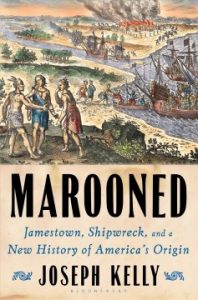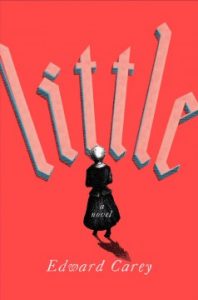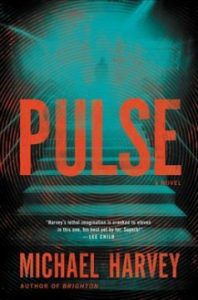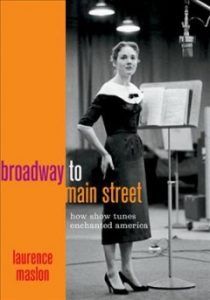Holy Toledo, beloved patrons! It’s been a whole week, and due to a terrible combination of common colds and general confusion, we have been pretty quiet this week–for which, our sincere apologies. We look forward to making it up to you in the coming weeks with lots of scintillating posts and helpful information, so stick around, ok?
For now, we bring you a handful of the books that braved the damp and windy fall weather to hop up onto our shelves, and cannot wait to make your acquaintance!

 Marooned: Jamestown, Shipwreck, and a New History of America’s Origins: Think you know the story of Jamestown–the first successful British colonial settlement in what would eventually become the United States? Well, Professor Joseph Kelly in eager to challenge the common assumptions and legends around Jamestown. In this gripping account of shipwrecks and mutiny in America’s earliest settlements, Kelly argues that the colonists at Jamestown were literally and figuratively marooned, cut loose from civilization, and cast into the wilderness. The British caste system meant little on this frontier: those who wanted to survive had to learn to work and fight and intermingle with the nearby native populations. Kelly not only introduces us to a new way of thinking about history, but a new cast of characters, as well, making this a historical work for history buffs, political minds, and lovers of good adventure can all support. Booklist gave this thought-provoking book a starred review, observing, “The U.S. loves its creation myths, and this mythmaking, myth-breaking history gives us a new character, Stephen Hopkins… Though Hopkins and those like him left few records, Kelly fleshes out the available glimpses with a vivid, detailed description of the settlement and its English and Native American contexts…Kelly’s dynamic narrative brings Jamestown to life and shows how history reflects the present as well as the past.”
Marooned: Jamestown, Shipwreck, and a New History of America’s Origins: Think you know the story of Jamestown–the first successful British colonial settlement in what would eventually become the United States? Well, Professor Joseph Kelly in eager to challenge the common assumptions and legends around Jamestown. In this gripping account of shipwrecks and mutiny in America’s earliest settlements, Kelly argues that the colonists at Jamestown were literally and figuratively marooned, cut loose from civilization, and cast into the wilderness. The British caste system meant little on this frontier: those who wanted to survive had to learn to work and fight and intermingle with the nearby native populations. Kelly not only introduces us to a new way of thinking about history, but a new cast of characters, as well, making this a historical work for history buffs, political minds, and lovers of good adventure can all support. Booklist gave this thought-provoking book a starred review, observing, “The U.S. loves its creation myths, and this mythmaking, myth-breaking history gives us a new character, Stephen Hopkins… Though Hopkins and those like him left few records, Kelly fleshes out the available glimpses with a vivid, detailed description of the settlement and its English and Native American contexts…Kelly’s dynamic narrative brings Jamestown to life and shows how history reflects the present as well as the past.”
 Little: A fascinating historical fiction that challenges and reinvents a critical moment in world history, through the eyes of one remarkable young woman. In 1761, a tiny, odd-looking girl named Marie is born in a village in Switzerland. After the death of her parents, she is apprenticed to an eccentric wax sculptor and whisked off to the seamy streets of Paris, where they meet a domineering widow and her quiet, pale son. Together, they convert an abandoned monkey house into an exhibition hall for wax heads, and the spectacle becomes a sensation. As word of her artistic talent spreads, Marie is called to Versailles, where she tutors a princess and saves Marie Antoinette in childbirth. But outside the palace walls, Paris is roiling: The revolutionary mob is demanding heads, and . . . at the wax museum, heads are what they do. Carey’s novel earned a starred review from Publisher’s Weekly, who noted “There is nothing ordinary about this book, in which everything animate and inanimate lives, breathes, and remembers. Carey, with sumptuous turns of phrase, fashions a fantastical world that churns with vitality, especially his “Little,” a female Candide at once surreal and full of heart.”
Little: A fascinating historical fiction that challenges and reinvents a critical moment in world history, through the eyes of one remarkable young woman. In 1761, a tiny, odd-looking girl named Marie is born in a village in Switzerland. After the death of her parents, she is apprenticed to an eccentric wax sculptor and whisked off to the seamy streets of Paris, where they meet a domineering widow and her quiet, pale son. Together, they convert an abandoned monkey house into an exhibition hall for wax heads, and the spectacle becomes a sensation. As word of her artistic talent spreads, Marie is called to Versailles, where she tutors a princess and saves Marie Antoinette in childbirth. But outside the palace walls, Paris is roiling: The revolutionary mob is demanding heads, and . . . at the wax museum, heads are what they do. Carey’s novel earned a starred review from Publisher’s Weekly, who noted “There is nothing ordinary about this book, in which everything animate and inanimate lives, breathes, and remembers. Carey, with sumptuous turns of phrase, fashions a fantastical world that churns with vitality, especially his “Little,” a female Candide at once surreal and full of heart.”
 I Am Dynamite! A Life of Nietzsche: Plenty of people quote Nietzsche, and reference his philosophy, but so few people know much about the man himself, beyond his remarkable mustache. Sue Prideaux is out to change that with this new biography that brings readers into the world of this brilliant, eccentric, and deeply troubled man, illuminating the events and people that shaped his life and work. From his placid, devoutly Christian upbringing—overshadowed by the mysterious death of his father—through his teaching career, lonely philosophizing on high mountains, and heart-breaking descent into madness, Prideaux documents Nietzsche’s intellectual and emotional life with a novelist’s insight and sensitivity. She also produces unforgettable portraits of the people who were most important to him, including Richard and Cosima Wagner, Lou Salomé, the woman who broke his heart; and his sister Elizabeth, a hard-line German nationalist and anti-Semite who manipulated his texts and turned the Nietzsche archive into a destination for Nazi ideologues. This is a biography for those looking to know more about Nietzsche himself, but also about the world and time that shaped him. The Times in London loved that aspect of this book, calling this book “Witty, terribly clever and steeped in the wild, doomed peculiarities of 19th-century Germania…a tremendous and reformative biography of a man whom popular history has perhaps done a disservice.”
I Am Dynamite! A Life of Nietzsche: Plenty of people quote Nietzsche, and reference his philosophy, but so few people know much about the man himself, beyond his remarkable mustache. Sue Prideaux is out to change that with this new biography that brings readers into the world of this brilliant, eccentric, and deeply troubled man, illuminating the events and people that shaped his life and work. From his placid, devoutly Christian upbringing—overshadowed by the mysterious death of his father—through his teaching career, lonely philosophizing on high mountains, and heart-breaking descent into madness, Prideaux documents Nietzsche’s intellectual and emotional life with a novelist’s insight and sensitivity. She also produces unforgettable portraits of the people who were most important to him, including Richard and Cosima Wagner, Lou Salomé, the woman who broke his heart; and his sister Elizabeth, a hard-line German nationalist and anti-Semite who manipulated his texts and turned the Nietzsche archive into a destination for Nazi ideologues. This is a biography for those looking to know more about Nietzsche himself, but also about the world and time that shaped him. The Times in London loved that aspect of this book, calling this book “Witty, terribly clever and steeped in the wild, doomed peculiarities of 19th-century Germania…a tremendous and reformative biography of a man whom popular history has perhaps done a disservice.”
 Pulse: In a small apartment above Kenmore Square, sixteen-year-old Daniel Fitzsimmons is listening to his landlord describe a seemingly insane theory about invisible pulses of light and energy that can be harnessed by the human mind. He longs to laugh with his brother Harry about it, but Harry doesn’t know he’s there—he would never approve of Daniel living on his own. None of that matters, though, because the next night Harry, a Harvard football star, is murdered in an alley. Detectives “Bark” Jones and Tommy Dillon are assigned to the case. The veteran partners thought they’d seen it all, but they are stunned when Daniel wanders into the crime scene. Even stranger, Daniel claims to have known the details of his brother’s murder before it ever happened. The subsequent investigation leads the detectives deep into the Fitzsimmons brothers’ past. They find heartbreaking loss, sordid characters, and metaphysical conspiracies. Even on the rough streets of 1970s Boston, Jones and Dillon have never had a case like this. A little bit of paranormal, a little bit of mystery, and a wonderful amount of world-building, this is a unique, pulse-pounding novel for anyone looking for something entirely different–or, as The Guardian put it, “Both unexpected and extremely clever.”
Pulse: In a small apartment above Kenmore Square, sixteen-year-old Daniel Fitzsimmons is listening to his landlord describe a seemingly insane theory about invisible pulses of light and energy that can be harnessed by the human mind. He longs to laugh with his brother Harry about it, but Harry doesn’t know he’s there—he would never approve of Daniel living on his own. None of that matters, though, because the next night Harry, a Harvard football star, is murdered in an alley. Detectives “Bark” Jones and Tommy Dillon are assigned to the case. The veteran partners thought they’d seen it all, but they are stunned when Daniel wanders into the crime scene. Even stranger, Daniel claims to have known the details of his brother’s murder before it ever happened. The subsequent investigation leads the detectives deep into the Fitzsimmons brothers’ past. They find heartbreaking loss, sordid characters, and metaphysical conspiracies. Even on the rough streets of 1970s Boston, Jones and Dillon have never had a case like this. A little bit of paranormal, a little bit of mystery, and a wonderful amount of world-building, this is a unique, pulse-pounding novel for anyone looking for something entirely different–or, as The Guardian put it, “Both unexpected and extremely clever.”
 Broadway to Main Street: How Show Tunes Enchanted America: The crossroads where the music of Broadway meets popular culture is an expansive and pervasive juncture throughout most of the twentieth century–from sheet music to radio broadcasts to popular and original cast recordings–and continues to influence culture today through television, streaming, and the Internet. The original Broadway cast album–from the 78 rpm recording of Oklahoma! to the digital download of Hamilton–is one of the most successful, yet undervalued, genres in the history of popular recording. The challenge of capturing musical narrative with limited technology inspired the imagination of both the recording industry and millions of listeners: between 1949 and 1969, fifteen different original cast albums hit number one on the popular music charts, ultimately tallying more weeks at number one than all of the albums by Frank Sinatra, Elvis Presley, and The Beatles combined. The history of Broadway music is also the history of American popular music; the technological, commercial, and marketing forces of communications and media over the last century were inextricably bound up in the enterprise of bringing the musical gems of New York’s Theater District to living rooms along Main Streets across the nation. Featuring interviews from composers, actors, singers, producers, and critics, this is a book for anyone with a song in their heart, stars in their eyes, or their ear tuned to the music of the Great White Way. Library Journal was smitten with this book, giving it a starred review and cheering, “This is both a lovely gift to musical theater fans and a serious text for those who study Broadway – Maslon deserves and receives raves.”
Broadway to Main Street: How Show Tunes Enchanted America: The crossroads where the music of Broadway meets popular culture is an expansive and pervasive juncture throughout most of the twentieth century–from sheet music to radio broadcasts to popular and original cast recordings–and continues to influence culture today through television, streaming, and the Internet. The original Broadway cast album–from the 78 rpm recording of Oklahoma! to the digital download of Hamilton–is one of the most successful, yet undervalued, genres in the history of popular recording. The challenge of capturing musical narrative with limited technology inspired the imagination of both the recording industry and millions of listeners: between 1949 and 1969, fifteen different original cast albums hit number one on the popular music charts, ultimately tallying more weeks at number one than all of the albums by Frank Sinatra, Elvis Presley, and The Beatles combined. The history of Broadway music is also the history of American popular music; the technological, commercial, and marketing forces of communications and media over the last century were inextricably bound up in the enterprise of bringing the musical gems of New York’s Theater District to living rooms along Main Streets across the nation. Featuring interviews from composers, actors, singers, producers, and critics, this is a book for anyone with a song in their heart, stars in their eyes, or their ear tuned to the music of the Great White Way. Library Journal was smitten with this book, giving it a starred review and cheering, “This is both a lovely gift to musical theater fans and a serious text for those who study Broadway – Maslon deserves and receives raves.”
Until next week, beloved patrons–happy reading!
